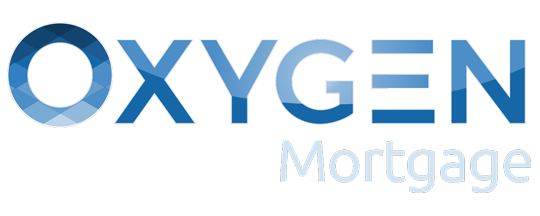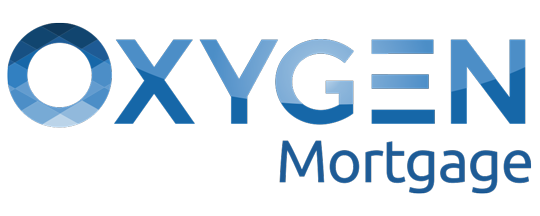Mortgage interest rates have risen rapidly in early 2022, with 30-year fixed rates going from an average of 3.22% in January to 5.1% by late April. While that’s still relatively low historically speaking – the average rate reached an all-time high of 18.63% in 1981 – it still has a significant impact on monthly housing costs for new homebuyers and borrowers with adjustable-rate mortgages.
And with inflation numbers continuing to remain high, it’s unclear when mortgage rates will stop their climb. If you’re concerned about mortgage interest rates rising and how it might affect your ability to buy a home or afford your monthly payment, here are some steps you can take to make it work for you.
10 Ways Future Homebuyers and Current Homeowners Can Save Money
Existing homeowners with fixed-rate mortgages won’t be impacted by rising rates unless they plan to refinance their loan or buy a new house. But if you’re a prospective homebuyer or you have an adjustable-rate mortgage, here are some steps you can take to combat rising mortgage rates:
1. Lock in Your Rate
After you’ve received initial loan approval from your lender, you can lock in your interest rate at any point up until five days before you close on your loan.
In an economic environment where interest rates are decreasing, or at least fluctuating, delaying a lock may be to your advantage. But when interest rates are on the rise and there’s no sign of stopping, the sooner you lock in your rate, the better. In most cases, lenders will allow you to lock in a rate for 30 to 60 days without charging you a fee.
2. Pay Extra to Lock in Your Rate for Longer
If you’re not quite ready to buy a house in the next month or two, you may be able to lock in an interest rate for up to nine months with some lenders.
If you’re constructing a new home, you may be able to go even longer, says Jennifer Beeston, senior vice president of mortgage lending at Guaranteed Rate Mortgage. “Many lenders have the ability to lock your loan on new construction for up to 365 days,” she adds.
Keep in mind that locking in a mortgage rate for longer can cost you up to 0.5% of the mortgage balance. So, if you’re buying a house and financing $350,000 of the purchase price, you may pay up to $1,750 for the extended rate lock.
That sounds steep, but the upfront cost can save you thousands or even tens of thousands of dollars over the life of the loan.
3. Consider Buying Discount Points
Discount points are a form of prepaid interest that you can pay upfront to knock down your loan’s interest rate. Each point costs 1% of the loan amount and typically cuts your interest rate by 0.25 of a percentage point.
For example, if you qualify for a $350,000 mortgage with a 5.5% interest rate, you could pay two points, costing you $7,000, to cut your interest rate to 5%. That would reduce your monthly payment by a bit more than $100.
That’s a big upfront cost, but if you plan to stay in your home for a long time and don’t anticipate that interest rates will go down anytime soon, it could end up saving you money. Consider using a mortgage payment calculator to get an idea of how long it would take for you to recoup the upfront cost through the savings on your monthly payment.
“This is truly a case-by-case situation,” says Tim Pascarella, president of Ross Mortgage Corp. “The bottom line is how much are you paying up front, how much does it save you, and how long do you plan to be in the loan?”
4. Make a Larger Down Payment
Down payments act as a risk mitigation tool for lenders. A larger down payment means that you don’t need to borrow as much and your monthly payment will be lower, both of which reduce the chances of your defaulting on your payments.
If you’re taking out a conventional loan and can afford it, consider putting at least 20% down to avoid private mortgage insurance. The premium for PMI can cost you between 0.5% and 1% of your loan amount on an annual basis, so eliminating it could cut your costs considerably.
Even if you can’t put that much down, the higher your down payment, the better your odds will be of securing a lower interest rate.
“If you put 20% or more down, you are going to be in line to get the best available rate,” says Pascarella. “However, it’s important to remember that rates are still historically low. Keeping 10% of the transaction amount in your pocket for a slightly higher rate might be worth it, but that depends on each buyer’s individual financial situation.”
5. Consider an ARM
Adjustable-rate mortgages do carry some risk in the long run. But they typically offer an upfront fixed-rate period, which can last between three and 10 years, that you can take advantage of immediately. What’s more, ARM rates typically start out lower than fixed-mortgage rates.
As of April 28, 2022, a 5/1 ARM – which means there’s a five-year fixed period, and your rate adjusts every year after that based on market rates – has an average interest rate of 3.78%, compared with an average rate of 5.1% for 30-year fixed-rate mortgages.
If you go this route, though, you’ll want to plan to refinance your loan before the fixed period ends, especially if interest rates have dropped by then. Otherwise, your costs may end up increasing.
6. Think Twice About an FHA Loan
Federal Housing Administration loans are appealing because they only require a 3.5% down payment and have a 580 minimum credit score requirement. In contrast, you can generally expect to put down at least 5% on a conventional loan, and the minimum credit score is 620.
But while FHA loans are easier to get, they require both an upfront mortgage insurance premium and an ongoing annual premium. The upfront premium will cost you 1.75% of your loan amount, and the ongoing premium can range from .45% to 1.05% of the loan amount, depending on the loan amount, the loan’s term and how much you put down initially. These added costs can make your mortgage less affordable.
What’s more, many FHA loan borrowers can’t get rid of their mortgage insurance premiums unless they refinance. On the flip side, borrowers can get PMI dropped from a conventional loan once their loan-to-value ratio hits 80%.
7. Improve Your Credit
While you can technically get approved for a mortgage if your credit score is 620 or higher (580 for FHA loans), mortgage lenders reserve their best interest rates for borrowers with credit scores in the mid-to-upper 700s or higher.
It can take time to work on improving your credit, but if it can help reduce your interest rate by even a little bit, the long-term savings can be significant.
Use a free credit monitoring service like the one offered by Experian to get access to your FICO score, which is the score that most lenders use. Your score will give you a general idea of your overall credit health.
Also, review your credit reports – you can get a free copy of each report weekly at AnnualCreditReport.com through the end of 2022 and every 12 months after that – to get an idea of which factors are influencing your score and which steps you can take to address potential issues. Things like paying off a loan, cutting your credit card balances and disputing inaccurate credit report information can all help raise your score.
8. Shop Around
While it’s easy to look up average mortgage rates, each lender has its own approach to pricing loans. As a result, it’s crucial that you apply with three or more mortgage lenders to get an idea of which can offer you the best interest rate.
Additionally, shopping around can help you find savings on closing costs and even give you a bargaining chip if you want to try to negotiate a lower rate with your lender of choice.
Working with a mortgage broker can help with this process, as brokers typically work with multiple lenders, but find out which lenders your broker works with and consider checking with other lenders on your own to compare.
9. Opt for a Shorter Repayment Period
Mortgage lenders typically offer lower interest rates to borrowers who go shorter than 30 years because the shorter term means the lender recoups its investment faster.
For example, while the average 30-year fixed-rate mortgage is 5.1%, as of April 28, 2022, the average rate on a 15-year mortgage is 4.4%. That’s not as big of a decrease as an ARM, but it could be worthwhile if you don’t want the hassle of refinancing later.
Before you consider this option, though, take a look at your budget to determine if you can afford the higher monthly payment that comes with a shorter term. “Make sure you are taking into account inflation on everyday expenses before you commit to that higher payment,” says Beeston.
Again, use a mortgage calculator to get an idea of what it would cost.
10. Refinance Out of Your ARM
If you’re an existing homeowner and you have an ARM in place, refinancing into a fixed-rate mortgage could potentially save you money. This is especially true if your ARM’s fixed-rate period is set to expire soon or you’re already experiencing the loan’s variable rate.
Before you refinance, though, consider the upfront closing costs and how they might impact your budget. You’ll also want to think about how long you plan to stay in the home. If you’re selling within the next year or two, the savings may not outweigh the costs of refinancing.
Unfortunately, you can’t predict what mortgage rates will look like over the next few years, but you can run some numbers to get an idea of what your upfront costs might look like compared with your long-term savings.




